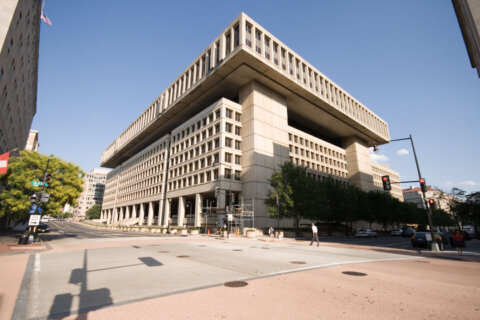Educators at J.O. Wilson Elementary in Northeast D.C. were bracing for a promising set of standardized test results last school year, so Principal Mitchell Brunson called it a “gut punch” when the data from the Partnership for Assessment of Readiness for College and Careers exam weren’t as positive as expected.
Teachers and administrators started carefully reviewing the data, and realized there were some students who they expected to fall into an area of proficiency that hadn’t. They identified students who were on the cusp, and questioned what could be done to support them in a way that would help them take a leap academically.
There was an emphasis, Brunson said, on making sure there were academic and social-emotional interventions available to every kindergarten through fifth grade student who needed them.
That approach paid off, as the school made significant progress on the 2024 D.C. School Report Card, which offers school- and city-level data for all of the city’s public schools. And with growth in both math and English language arts, J.O. Wilson reported the largest increase in the accountability score metric.
“It wasn’t just one thing,” Brunson said of the school’s strides. “It was a collective of things.”
The campus offered summer school for three straight years, he said, and the math and reading interventionists worked with students during the school day. Teachers volunteered their time to support students who needed help before the school day started, and the campus had “a really robust academic enrichment portion in our after school program,” Brunson said.
The school had growth in the 68th percentile in English language arts and in the 75th percentile in math, according to Kelley Scholl, assistant superintendent of Data, Assessment and Research in the Office of the State Superintendent of Education.
“Those are really impressive numbers, in that those are all relative to other schools in the District, and showed significant increases since the previous school year,” Scholl said. “I will point to their growth as an indicator of how the great programming that they’re doing is working.”
The school also cracked down on absenteeism, intervening early to prevent students from becoming chronically absent. Chronically absent kids miss 10% or more of days in a school year.
“Where we were going wrong was a lot of the kids who were coming to school and maybe missing a day or two every other week, those kids will start popping up on our radar in terms of showing as chronically absent,” Brunson said.
At the beginning of the last school year, school staff contacted families on one of the first days a student missed. Those conversations detailed the value of attending school, “and what we found is that many of our families didn’t even realize that their students were popping up on that chronic absenteeism or truancy list,” Brunson said.
Brunson attributed the school’s progress to “humanizing the data” and making sure every student had access to the resources they need during the school day.
Broadly, the 2024 D.C. School Report Card showed the 2023-24 graduation rate stayed the same, at 76.1%.
“There are signs of improvement, that things are getting better,” Scholl said. “We saw our attendance rate raise a little bit. We saw small but meaningful increases in assessment results, and we sustained our graduation rate at 76.1%, which was the highest last year and this year that it has ever been since we started measuring using the adjusted cohort graduation rate.”
More information about the D.C. School Report Card is available online.
Get breaking news and daily headlines delivered to your email inbox by signing up here.
© 2025 WTOP. All Rights Reserved. This website is not intended for users located within the European Economic Area.








